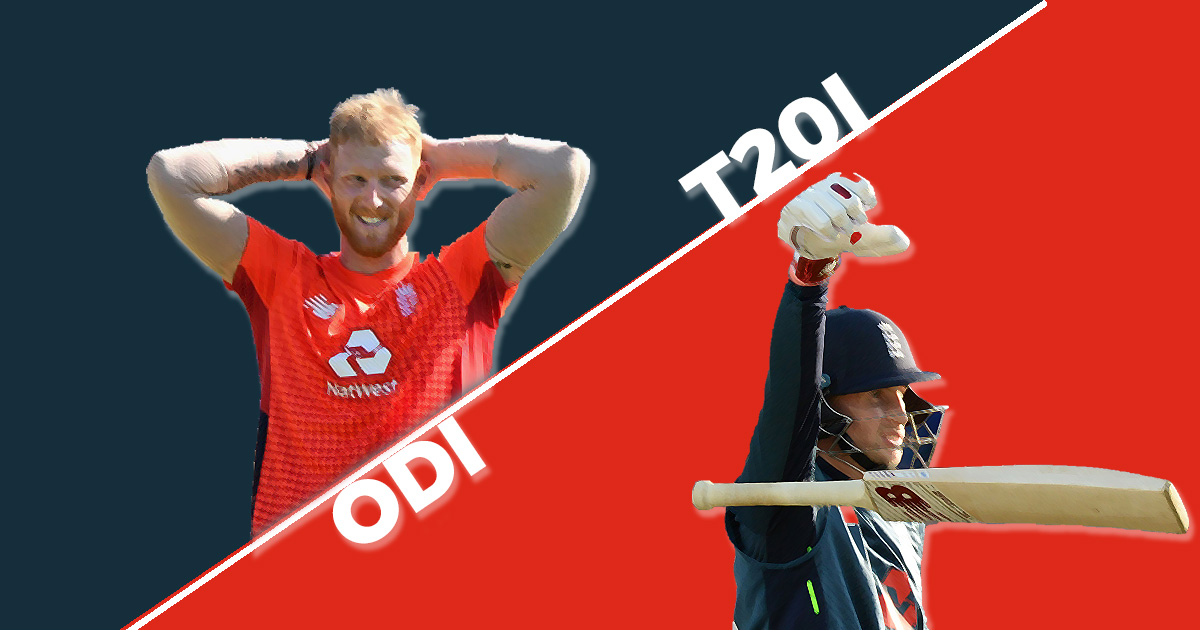England in ODIs vs England in T20Is - A contradictory tale
It is a common tradition in most of the cricket venues to showcase posters of various cricketers in different corners of the office and Vidarbha Cricket Association is not an exception. A city of rich heritage and culture, Nagpur has always been a delight for any journalist covering a match there.

Entering the press-box, what will attract your attention is the photos of some of the best cricketers of all-time. Among them is one of Ian Botham, one of the finest all-rounders to have graced the game of cricket. While that is unsurprising, the caption is something that hits the bull’s eye - "a flamboyant all-rounder but erratic performer in one-day cricket".
Break it down. “Flamboyant and erratic”. A player whose flamboyance and aggressive approach was the basis on which England thrashed Australia in 1981 to win THAT Ashes, was somehow never made it that big in the limited-overs game. His game was perfectly designed for the glamour of 50-overs cricket, but as compared to his larger-than-life figure in Test cricket, Botham was somehow an “erratic” performer. This just mirrors the way England used to approach ODI cricket and for the longest time, while England has always produced some of the great Test cricketers every now and then, they failed to put up a solid performance in any of the World Cups, let alone winning one. The likes of Mark Alleyne, Ian Austin, Ronnie Irani, Mal Loye, and Paul Nixon were a regular in the national limited-overs side and at present, one just can't comprehend just how they played for such long time.
It needed a moment to bring in a revolution. And the 2015 World Cup debacle became the tipping point as England’s ODI cricket, under the management of Andrew Strauss, axed Alastair Cook and appointed Eoin Morgan to bring in a radical transformation. And now, with World Cup being less than a year away, they are on the right track as indicated by a 48-20 win-loss record since the World Cup in Australia, which is by far the best in the world during the period. They are now not just the best team in the world, but also at the pole position to lift the Cup in Lord’s as well.
In ODIs, England have relied exclusively on their batsmen to deliver the wins - their run rate of 6.26 is well clear of the next-best, 5.77 by India and their boundary-hitting ability throughout their innings is just phenomenal. The flat and hard nature of the English surface - the result of an all-out approach by the England management - also contributed to the same. The accumulative style was purely designed for the 50-over cricket and the younger players, developed in the age of T20 and better prepared to adopt the aggressive approach of the age, changed the dynamics of English limited-overs team altogether.
However, the aberration being England's struggle to translate their batting form into the shortest format of the game which is visible from their
While in the ODIs, they exploit the powerplay incessantly, Eoin Morgan’s side is just the fifth fastest scoring side in the world in T20s, behind Australia, India, and South Africa. But, conversely, since the last world tournament, only Australia score more quickly in the first six overs than England do, which makes it evident that certainly, it is the result of a false start. The problem with England happens once the Powerplay elapses and their fortunes decline immediately. During the aforementioned period, England
A simple look at the team makes it clear that England side is filled with a lot of openers and each of Jos Buttler, Jason Roy, Alex Hales, Jonny Bairstow, Moeen Ali, and David Willey at some point in their career have opened for their respective counties. While in ODIs, they, despite batting in the middle-order, get some balls to get their eye in before launching the fireworks, the lack of an option to get that with the wide field means they can’t do the same in T20Is and suffer. The all-out approach in T20s has been a detriment after that as they lost their wickets in the middle and death, potentially ruining the chances of getting to a big score.
While in ODI cricket, the early aggression from England's openers act as a catalyst for rest of the batting line-up to feed off of them, in T20 cricket, their lack of proper middle-order fireworks balances the things out in a go and the opposition bowlers still have the upper hand to change the game on its head. For the major part of English cricket history, they had tried to copy other team's style, but they are doing it their way in ODI cricket now. But in T20 cricket, a single-minded approach doesn’t take you anywhere - ask Royal Challengers Bangalore, who have filled their team with brilliant top-three and still managed to mess it up each and every season.
There is no doubt to the fact that England

Comments
Sign up or log in to your account to leave comments and reactions
0 Comments